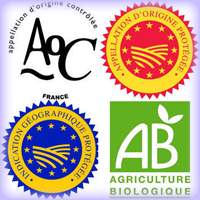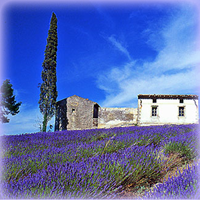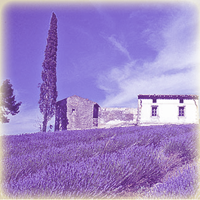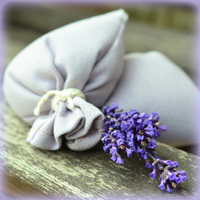Medicine : Lavender that heals
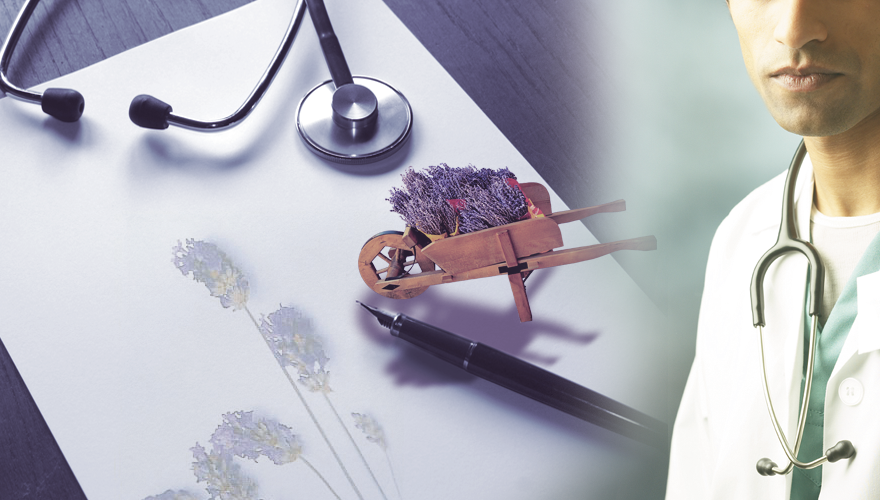
Already employed in ancient Roman baths, lavender use has continued on through the centuries.
Many authors have reported its calming, antiseptic and anti-inflammatory, anti-fungal, healing properties. It kills lice and many strains of bacteria. Used as an aerosol or in evaporators, it purifies the air in homes.
MEDICINE LAVENDER
The word "lavender" (Lavandula) was created in the Middle Ages from the Latin verb "lavare" meaning "to wash" but the use of this plant dates from much earlier times. The earliest information we have shows the Romans using it to scent their baths and laundry.
We also believe that lavender essential oil, known as "Celtic Nard" had great importance for various pharmaceutical and perfumery uses of the time.
Pliny and Dioscorides mention especially the "aspic" and "stoechas” lavenders. Dioscorides ranks them among the "precious plants”.
In the centuries that followed, lavender continued to be discreetly but regularly cited, mainly in texts concerning medicine, hygiene and beauty.
In 1371, Marguerite de Bourgogne had purchased some (very costly) lavender plants with which she had even successfully sown the seeds. Having nothing to do with the cultivation such as we know it today, it was probably for a “simple garden” where all the “good herbs” were assembled to please the eye but also to make up a cabinet of natural medicines like many other castles or monasteries.
In 1478, King René of Provence, bought some essence of aspic as a gift to a lady (aspic refers to the time when aspic meant lavender in general, not the variety, aspic).
* Source : "Lavandes et Lavandins", Christiane Meunier, Editions Edisud, 1999
Today, aromatherapy and phytotherapy employ increasing amounts of lavender essential oils
which are also used in numerous medicinal formulations.
Lavender essential oil is registered in the European Pharmacopoeia.
Testimonies of those healed
M. Gattefossé wrote that in 1910 he suffered from gangrene in both hands after a laboratory explosion:
"I owe my life to the application of lavender essential oil on my infected wounds."
During a meeting of doctors and surgeons in the 5th French Army on August 18, 1915 the application of this method was recommended for treating hundreds of thousands of wounded during the battle of the Marne.
The eminent surgeon Alexis Carrel (Nobel Prize in 1912) used essential oils for his renowned transplants.
* Source : "Lavandes Lavandins Parfum d'histoire" by Robert Veyan
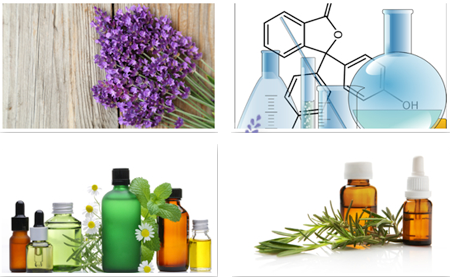
FIGHTING THE PLAGUE...
In the first half of the 18th century the plague overran Provence.
The struggle against this scourge included measures of quarantine and travel restrictions to avoid its spread.
People also burned large quantities of aromatic plants believed to fight disease in homes and on streets, notably the “miasma” presumed to be responsible for the contagion.
Evidence of money committed for purchasing the plants can be found in the accounts of urban communities, for example one accounting entry in 1722 mentioned:
"For the peasants who have cut thyme, rosemary and lavender for delicate perfume and juniper… 21 pounds 8 sols. 3."
Lavender is also widely used in medicinal preparations for external use: plasters or poultices, etc...
Note here that vinegar was widely used as a “disinfectant” for skin, clothes, etc., and that there are many recipes for vinegar from lavender.
Medicines for internal use were also using lavender in all its forms.
For example, here is the letter addressed to the consuls by Jolly, a surgeon, February 10, 1721:
"[..] I used the following remedy and have always succeeded:
Volatile salts from harthorn: one-half ounce each
Cinnamon and nutmeg: one gross and fifteen grains
Saffran, one gross
Oil of nutmeg, lavender, chanterelle, of amber, marjoram: ten grains of each oil
Salts of tarter: one ounce
Wine spirits: four ounces.
Volatile spirits of sal ammoniac, four ounces.
I place all these drugs in a half-empty, well-stoppered, thick glass bottle. I expose it in a mildly warm place and in four or five days it is finished. Once prepared, the liquor is poured into small, well-stoppered, thick glass bottles to be conserved. Some salt remains on the bottom of the first bottle which makes an excellent preservative. Lemon rinds are added for enjoyment.
The dosage is ten drops for children which, for older persons, can be increased up to forty or fifty drops in a glass of good wine for urgent cases. The remedy works wonders on all occasions where blood and lymph are found to be too coagulated, as occurs with the volatile acid that accompanies all the various symptoms of the plague.
I hope it will work for the poor patients in Provence who are like brothers to me..."
* Source : "Lavandes et Lavandins", Christiane Meunier, Editions Edisud, 1999





